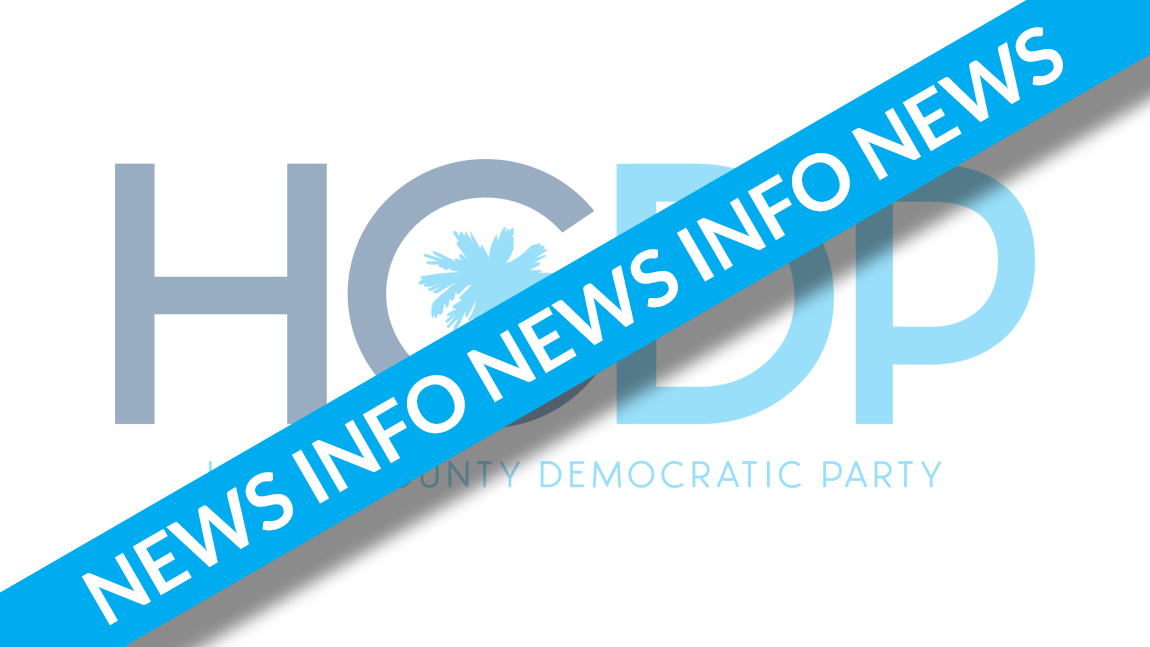By Julia Parker.
In the first 14 days of the Trump Administration, nine executive orders and 11 presidential memoranda were issued. Let’s pay attention to what happened in this historic two week period. Here is a review of these orders and memoranda and what they mean to ordinary Americans. This is a long read but worth your time. And please don’t miss “Other issues” at the end – we can’t lose sight of these either! (My next post will focus on how to take action to oppose these and future measures.)
Both executive orders and memoranda define executive branch policy for an Administration. Executive orders are assigned numbers, like laws are, and are published in the Federal Register. They provide a framework for members of the executive branch to follow when executing a new policy. Presidential memoranda are generally not assigned numbers or published in the Federal Register. They serve to delegate tasks to various departments within the executive branch.
Executive Orders:
1.Minimize the Economic Burden of the Patient Protection and Affordable Care Act pending repeal.
![]() What it says: The Trump Administration is dedicated to the repeal of the ACA. Until it is repealed, the federal government will do nothing that increases the cost to individuals, providers, or insurers who are implementing the ACA during the time that Congress is repealing the law. It will do nothing to impede the implementation of the law as written. The federal government will do all it can to push responsibility for health insurance to the States. All departments with responsibility for the ACA will promote interstate commerce in health insurance to best serve patients.
What it says: The Trump Administration is dedicated to the repeal of the ACA. Until it is repealed, the federal government will do nothing that increases the cost to individuals, providers, or insurers who are implementing the ACA during the time that Congress is repealing the law. It will do nothing to impede the implementation of the law as written. The federal government will do all it can to push responsibility for health insurance to the States. All departments with responsibility for the ACA will promote interstate commerce in health insurance to best serve patients.
What it means: This executive order says nothing about replacing the ACA, nor does it speak to reforming it. It does encourage health insurers to work across state lines to provide a competitive marketplace for health insurance products. Effective replacement is something each of us needs to monitor and be involved in.
2. Withdrawal of the U.S. from the Trans-Pacific Partnership Negotiations and Agreements
What it says: I (Pres. Trump) hereby direct you to withdraw the United States as a signatory to the Trans-Pacific Partnership (TPP), to permanently withdraw the United States from TPP negotiations, and to begin pursuing, wherever possible, bilateral trade negotiations to promote American industry, protect American workers, and raise American wages.
What it means: The TPP would lower tariffs between the U.S. and 12 countries that border the Pacific Rim. China was excluded. The withdrawal of the U.S. from the TPP immediately opened those markets to China as the dominant trading partner. China has acted to fill that role. The U.S. must now negotiate individual treaties with each of the Pacific Rim countries. In the game of global chess, the U.S. just undid decades of work done by NZ, Australia, and us to support developing markets in the region and thwart Chinese plans to extend its influence. Signatories to the TPP included the U.S. and Australia, Brunei Darussalam, Canada, Chile, Malaysia, Mexico, New Zealand, Peru, Singapore, Vietnam and Japan.
3. Expedite environmental review and approvals for high profile infrastructure projects
![]() What it says: Governors or Cabinet members can request a “high priority” designation for infrastructure projects. If the Chairman of the White House Council on Environmental Quality approves the project, agency heads will be directed to move the project to the top of the list for review and approval.
What it says: Governors or Cabinet members can request a “high priority” designation for infrastructure projects. If the Chairman of the White House Council on Environmental Quality approves the project, agency heads will be directed to move the project to the top of the list for review and approval.
What it means: This order will streamline approval of qualified projects, especially those related to “improving the U.S. electric grid and telecommunications systems and repairing and upgrading critical port facilities, airports, pipelines, bridges, and highways.” This may mean job opportunities will open up for those executing the projects. It may also mean pressure on environmental considerations to fast-track projects.
4. Border security and immigration enforcement improvements (Build the Wall)
What it says: Undocumented aliens are streaming across the US-Mexican border and are not vetted by US Immigration officers. Many of these undocumented individuals represent drug cartels and gangs intent on criminal activity and terrorism in the US. The federal government will build a physical wall to keep these people out. It will erect detention facilities along the wall to detain those who do cross, and will staff the facilities with Immigration officials and judges who will strictly examine claims for asylum and return those not qualifying to their countries of origin. The EO requires 5000 additional border control agents be hired immediately; a full assessment of border security, physical, geographical, and operational will be completed within 180 days; a study of all aid to Mexico by year for the last 5 years will be compiled; and law enforcement officers on all levels throughout the country will be charged with immigration enforcement.
What it means: The federal government will immediately dedicate available financial resources to begin to build The Wall. Estimated costs of completion range from $10-15 billion, which has not been budgeted. Rep. Paul Ryan has pledged that the funds will be made available. Despite a federal hiring freeze, 5,000 new jobs are approved herein (see Presidential Memorandum #1 and Executive Order #5, below). The EO does not discuss payment in any form by Mexico to build the wall. It does not address payment at all. Nor does it address possible increases in consumer goods prices due to tariffs or taxes to fund the wall.
5. Enhance public safety in the interior of the U.S.
 What it is: This EO cuts funding to sanctuary cities in the U.S., adds 10,000 ICE (Immigration and Customs Enforcement) officers, and instructs state and local law enforcement to act as ICE agents when and if they identify an undocumented person during the course of their normal duties.
What it is: This EO cuts funding to sanctuary cities in the U.S., adds 10,000 ICE (Immigration and Customs Enforcement) officers, and instructs state and local law enforcement to act as ICE agents when and if they identify an undocumented person during the course of their normal duties.
What it mean: Mayors of “sanctuary cities” have explained that law enforcement officers in their cities will not turn-in to ICE a law-abiding undocumented immigrant identified during the course of criminal investigations for crimes not involving that person or for minor infractions committed by that person. They will turn over people who commit serious criminal offenses. The mayors claim this policy makes their cities safer because law-abiding undocumented immigrants are helping police keep the cities safe. Without this policy, all undocumented people become suspicious of police and will not help law enforcement, with the result that the crime rate increases. Twenty-nine U.S. cities are identified as sanctuary cities. Implementation of this EO might mean these cities are less safe. The increase in ICE officers is both a fiscal burden and a job opportunity.
6. Protect the Nation from Foreign Terrorist Entry (The Ban)
What it is: Suspend any immigration from Iran, Iraq, Libya, Somalia, Sudan, and Yemen for 90 days and Syria until the President decides otherwise. Over the next 30 days various Secretaries will determine which countries provide insufficient information about their nationals for the US to determine whether they might potentially present a threat to the US. In the next 60 days the Sec. of State will request that those nations provide the information identified, and if they don’t, people from those countries will not be allowed visas for entry. This will apply to any and all nations so identified. The Sec. of State and Homeland Security will generate a uniform standard by which to vet all visa applicants. For the next 120 days the Refugee Admissions Program will be suspended while the Secretaries determine whether vetting is sufficient to determine what additional procedures should be taken to ensure that those approved for refugee admission do not pose a threat to the security and welfare of the United States, and shall implement such additional procedures. Those currently in the program will have to meet the higher standards (if any) before being admitted.
What it means: If you have a relative or a family previously approved for admission to the States, you will have to wait. It is probable that other countries will enact similar rules where U.S. applicants are concerned, requiring additional information and longer lead-times for visa application/approval. The provisions of this ban are currently suspended by the Courts (2/5/17).
7. Ethics commitments by Executive Branch appointees (“Drain the Swamp”)
What is it: Appointees to every executive agency will (1) never lobby a foreign government and (2) won’t do any other lobbying for 5 years after leaving government service. Appointees will not lobby their former employers for 2 years after the date of their appointment. If an appointee was a lobbyist within two years of when appointed, s/he will not lobby again for 2 years after the date of appointment.
What it means: The revolving door between the Executive Branch and lobbyists just slowed down. People are generally restricted from lobbying for 2 years from the date of appointment; which means that if they serve more than 2 years in the Administration, they can lobby immediately upon leaving the administration. THIS IS NOT DRAINING THE SWAMP: IT IS MEANINGLESS. This does not prevent someone in the Executive Branch from taking a job with a company that they formerly regulated or interacted with when in a government position. Note, this does not affect Members of Congress.
8. Reducing regulation and regulatory costs
 What it does: Reduces federal regulatory burden on business by requiring that federal regulatory agencies eliminate 2 old regulations for each new regulation introduced in 2017 and requires that the net cost of enacting (new minus old) regulations in 2017 be zero dollars.
What it does: Reduces federal regulatory burden on business by requiring that federal regulatory agencies eliminate 2 old regulations for each new regulation introduced in 2017 and requires that the net cost of enacting (new minus old) regulations in 2017 be zero dollars.
What it means: This should mean decreased regulation and no cost to government of enforcing any new regulations. It will mean reconsideration of EPA, OSHA, IRS, financial (like Dodd-Frank), and other regulations. The cost to American people and business may depend on whether you benefit from the regulation or incur costs as a result of the regulation. (Clean water or mine tailings? See Issues #8, below.)
9. Reviewing Wall Street Regulations
What it is: This EO sets “Core Principles” of financial regulation that the Administration says would empower Americans to make independent financial decisions and informed choices in the marketplace, save for retirement, and build individual wealth; prevent taxpayer funded bail-outs; and make American businesses more competitive in the international marketplace by decreasing regulatory burden.
What it means: This EO is in keeping with the Republican Party’s belief that market forces will normalize fluctuations. Hence, it is a specific injunction against taxpayer bail-outs. (Ask the auto industry if it would have recovered on its own, and remember that the loans were paid back.) The statement “empower Americans to make their own financial decisions” could pave the way to privatize Social Security. This order bears watching.
Presidential Memoranda:
1. Halt new federal regulations until they can be reviewed by the Administration
What it is: This is a fairly standard memorandum issued by incoming Administrations to permit review and recall of last minute regulations by the former Administration.
What it means: Last minute Obama era regulations may not stand.
2. Reinstate the Mexico City Policy
What this is: Currently, taxpayer dollars cannot be used to fund abortion procedures in other countries, but the order expands that oversight and also prohibits organizations from receiving U.S. family planning funding if they offer abortion counseling or advocate for abortion rights in other countries — even if the medical procedure is legal in that country.
What this means: This will force health providers (aid groups, charities) to decide whether to accept the ruling and no longer provide abortion-related counseling services, or reject it and lose U.S. funding that many rely on. The freeze applies even if the organizations use other sources of funding for these services.
3. Federal hiring freeze except for the military
What this is: This is an executive branch hiring freeze that no vacancies will be filled, except for the military, to reduce government cost and bloat.
What this means: Lots. In cases, like the VA, where solving problems requires manpower, inefficiency will still reign. Government job opportunities are limited. Note that ICE has, per above EO’s, 15,000 jobs to fill! Also, the VA declared all its posted jobs “essential” to get around this memo.
4. Construction of American Pipelines using only American steel
What this is: The pipelines across America should only be made with American steel
What this means: If you are in the steel industry, this is good news. However, the U.S. currently has capacity for only half the amount of steel required annually for the pipelines, so what happens? Do we take twice as long to build out? Do we wait to build pipelines until new factories can be built? (Is this for real or for feel good?)
5. Keystone Pipeline Construction
What this is: The Keystone Pipeline will be built, but the terms will be renegotiated. The pipeline runs from Canada’s oil sands to Gulf Coast refineries and will carry 800,000 barrels/day.
What this means: More domestic oil and gas production in the future. Continued dependence on fossil fuels; continued air pollution; water pollution.
6. Prioritizes the Dakota Pipeline
What this is: The Sec. of the Army is instructed…to review and approve the completion of the Dakota Access Pipeline. The pipeline will move 470,000 barrels of crude/day from the Bakkan Formation, located between N. Dakota and Montana, to southern Illinois.
What this means: More domestic oil and gas production; continued dependence on fossil fuels; continued air pollution; water pollution. The Standing Rock Sioux have opposed the pipeline due to concerns over drinking water contamination and desecration of sacred sites. Under the Obama Administration, the Army Corps of Engineers agreed in December, 2016, to do an environmental impact statement and perhaps reconsider the pipeline route. The Trump Memorandum has directed the Corps of Engineers to review and approve the completion of the pipeline, and to reconsider the appropriateness of the environmental impact statement. This policy has cultural, racial, and big business vs little guy aspects.
7. Streamline Permitting and Reducing Regulatory Burdens for Domestic Manufacturing
What is this: This memorandum seeks to facilitate manufacturing by identifying permits and regulations needed to build new or add to existing factories, and to streamline the process for satisfying the requirements to obtain approval. It also requires review of current federal regulations to determine which ones pose an undue burden on manufacturers.
What this means: Expedited manufacturing expansion and more jobs at the possible cost of environmental, health, safety, and financial protections for the public.
8. Rebuilding U.S. Armed Forces
What this is: Sec. of Defense is to review the US military and ballistic missile defense system and to submit recommendations on how to modernize the military.
What it means: Budgetary expenditures to upgrade military equipment and cyber defense
9. Plan to Defeat ISIS
What it is: A comprehensive plan to be on Trump’s desk in 30 days. The memo puts everything up for consideration, from rules of engagement to how to pay for the program.
What it means: War against a furtive enemy on a comprehensive scale. This will require the utmost diplomacy so as not to alienate those Muslim nations not already alienated.
10. Reorganization of the National Security Council and Homeland Security Council
What this is: The President has the choice of advisors on the NSC. This memo removes Director of National Intelligence and Joint Chiefs from standing membership of the NSC and puts presidential advisor Steve Bannon on as a permanent member.
What this means: Experts usually involved in evaluating national security matters may not be included in the discussions. People who are not experts in security have a voice at the table.
11. Memorandum on the Fiduciary Rule
What this is: Directs Sec. of Treasury to review the Obama Administration’s Fiduciary Rule which requires financial advisors managing retirement accounts to act in the best interest of their clients, not their own best interest. If the rule (1) does not meet “Core Principles” or (2) harms the retirement industry, it may have to be revised or rescinded.
What this means: Recall that one of the Core Principles was to empower Americans to manage their own finances and save for retirement. Retirees lose $17 billion/year in costs to retirement accounts because of “conflicted interest,” or recommendations that are “good” for the client, but better for the brokers. An example is recommendation of a mutual fund that pays the broker a recurring annual fee for steering investors into it instead of paying the investor the full appreciation on the fund. This behavior is better for the retirement industry. Being empowered to manage your own finances means being aware of the nuances of how the financial system generates its own wealth. How many Americans have the time or interest to be that involved? AARP is against this Memorandum.
Other Issues:
- Russia meddling in the election
- Voter fraud investigation (expensive)
- Firing of Sally Yates, acting AG, for questioning constitutionality of Muslim Travel Ban
- Nomination of Neil Gorsuch to the Supreme Court
- Failed raid in Yemen that was approved over dinner (Where was the NSC?)
- Promise to recall the Johnson Amendment, allowing Churches to endorse candidates
- Hung up on Malcolm Turnbull, Australian Prime Minister over Obama immigration agreement
- House resolved and Senate approved the repeal of the Stream Protection Rule. The rule prevented coal mining tailings to be dumped in streams with no downstream water quality monitoring.
- Congressional ruling that companies doing business with governments are not required to disclose payments made to those governments. This applies to payments made to the US or foreign governments for commercial development of oil, gas, or mineral projects.
For text of each of the EOs and Memoranda, see https://www.whitehouse.gov/briefing-room/presidential-actions.



